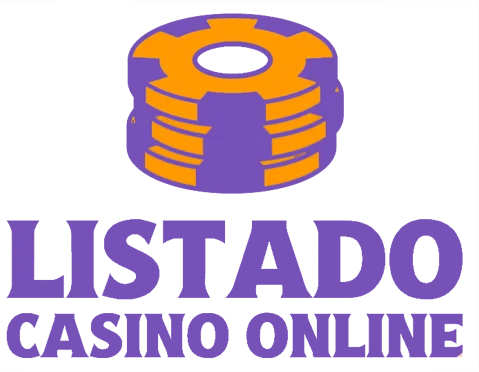Estadísticas y predicciones de Rende
¡Descubre el Torneo de Tenis Rende en Italia!
El torneo de tenis Rende en Italia se ha convertido en un evento imperdible para los aficionados al tenis, ofreciendo partidos emocionantes y predicciones expertas para apuestas diarias. Cada día, el torneo presenta enfrentamientos llenos de acción donde los mejores jugadores compiten por el título. En este artículo, exploraremos en profundidad todo lo que necesitas saber sobre el torneo, desde los jugadores destacados hasta las estrategias de apuestas más efectivas.
No tennis matches found matching your criteria.
Historia y Ubicación del Torneo
Situado en la pintoresca región de Calabria, el torneo de tenis Rende se ha establecido como una parada importante en el circuito internacional de tenis. Con una historia rica que se remonta a varios años, este torneo ha crecido en popularidad gracias a su excelente organización y la calidad de sus instalaciones. Los jugadores y aficionados son recibidos con entusiasmo en esta vibrante ciudad italiana, conocida por su belleza natural y su acogedora atmósfera.
Formato del Torneo
El torneo de Rende se juega bajo un formato estándar de competición profesional, con rondas clasificatorias seguidas de la fase principal del torneo. Los jugadores se enfrentan en una serie de partidos eliminatorios hasta que se determina al campeón. Este formato garantiza emocionantes encuentros desde el primer día hasta la gran final.
Jugadores Destacados
Cada edición del torneo atrae a una mezcla de talentos emergentes y veteranos experimentados. Algunos de los jugadores más destacados que han participado en ediciones anteriores incluyen:
- Jugador A: Conocido por su impresionante saque y habilidad para jugar bajo presión.
- Jugador B: Destaca por su agilidad y estrategia en la cancha, logrando victorias sorprendentes.
- Jugador C: Un joven prometedor que ha llamado la atención por su técnica impecable.
Predicciones Expertas para Apuestas
Las predicciones expertas son una parte esencial para los aficionados que disfrutan de las apuestas deportivas. En el torneo de Rende, contar con análisis detallados puede marcar la diferencia entre una apuesta ganadora y una perdida. Aquí te ofrecemos algunas estrategias clave:
- Análisis del historial de enfrentamientos: Revisa cómo se han enfrentado los jugadores anteriormente para identificar patrones.
- Evaluación del estado físico: Considera las condiciones físicas actuales de los jugadores, especialmente si han tenido recientes lesiones o descansos prolongados.
- Condiciones climáticas: Las condiciones climáticas pueden afectar el rendimiento en la cancha, por lo que es importante tenerlas en cuenta al hacer tus predicciones.
Estrategias de Apuestas
Aplicar estrategias inteligentes puede mejorar tus probabilidades de éxito al apostar en el torneo Rende. Aquí te presentamos algunas tácticas recomendadas:
- Diversificación: No pongas todos tus recursos en una sola apuesta. Distribuye tus apuestas entre diferentes partidos o tipos de apuestas para minimizar riesgos.
- Seguimiento constante: Mantente actualizado con las últimas noticias y cambios en las alineaciones del torneo para ajustar tus apuestas según sea necesario.
- Uso de herramientas analíticas: Utiliza herramientas y plataformas especializadas que ofrecen estadísticas detalladas y pronósticos basados en datos históricos.
Cómo Seguir el Torneo
Sigue cada momento del torneo Rende a través de diversas plataformas que ofrecen cobertura en vivo:
- Sitios web oficiales: Consulta el sitio oficial del torneo para obtener información actualizada sobre horarios, resultados y detalles técnicos.
- Sociales media: Sigue las cuentas oficiales del torneo en redes sociales como Twitter e Instagram para recibir actualizaciones instantáneas y contenido exclusivo.
- Transmisiones en vivo: Muchos servicios ofrecen transmisiones en vivo donde puedes ver los partidos mientras sigues las estadísticas en tiempo real.
Análisis Técnico del Juego
El análisis técnico es crucial para entender cómo se desarrollan los partidos y predecir sus resultados. Algunos aspectos clave a considerar incluyen:
- Tierra batida vs otros tipos de superficies: La superficie de juego puede influir significativamente en el rendimiento. La tierra batida, común en Rende, favorece un estilo de juego defensivo con largas devoluciones.
- Estrategias ofensivas y defensivas: Observa cómo los jugadores adaptan sus estrategias durante el partido. Algunos pueden optar por un juego más agresivo mientras que otros prefieren mantenerse sólidos defensivamente.
- Gestión física y mental: La resistencia física y la fortaleza mental son factores determinantes, especialmente en partidos largos o durante condiciones adversas.
Impacto del Torneo en la Comunidad Local
Más allá del deporte, el torneo tiene un impacto positivo significativo en la comunidad local. Trae beneficios económicos a través del turismo y crea oportunidades laborales temporales durante el evento. Además, fomenta un sentido de orgullo local al colocar a Rende en el mapa internacional del tenis.
<|repo_name|>matthewdavidjohnson/ProgrammingAssignment2<|file_sep|>/cachematrix.R ## These two functions work together to cache the inverse of a matrix. ## makeCacheMatrix creates an object that contains both the matrix and ## its inverse (if it has been calculated). cacheSolve looks for the ## inverse in the object and returns it if found; if not found, ## it calculates the inverse and caches it in the object. ## ## To use these functions: ## ## mymatrix <- makeCacheMatrix(mydata) # mydata is a matrix ## myinverse <- cacheSolve(mymatrix) ## ## The second time you call cacheSolve on the same object it will return ## the cached inverse rather than recalculating it. makeCacheMatrix <- function(x = matrix()) { # create an empty matrix to hold the inverse inverse <- NULL # set the original matrix set <- function(y) { x <<- y inverse <<- NULL } # return the original matrix get <- function() x # set the inverse matrix setInverse <- function(inv) inverse <<- inv # return the inverse matrix getInverse <- function() inverse # return a list of functions to set/get x and its inverse list(set = set, get = get, setInverse = setInverse, getInverse = getInverse) } cacheSolve <- function(x, ...) { ## Return a matrix that is the inverse of 'x' # check to see if the inverse has already been calculated inverse <- x$getInverse() if(!is.null(inverse)) { message("getting cached data") return(inverse) } # if not already calculated then calculate it and cache it data <- x$get() inverse <- solve(data) x$setInverse(inverse) inverse } <|file_sep|>#include "types.h" #include "stat.h" #include "user.h" #include "fcntl.h" int main(void) { int fd; char buf[512]; int n; fd = open("cat.c", O_RDONLY); if (fd == -1) { printf(1,"cat.c not existn"); exit(); } while((n = read(fd,buf,sizeof(buf))) > 0) { write(1,buf,n); } close(fd); exit(); } <|file_sep|>#include "types.h" #include "defs.h" #include "param.h" #include "memlayout.h" #include "mmu.h" #include "x86.h" #include "proc.h" int sys_pipe(void); int sys_fork(void); int sys_exit(void); int sys_wait(void); int sys_kill(void); int sys_exec(void); int sys_fstat(void); int sys_chdir(void); int sys_dup(void); int sys_getpid(void); int sys_sbrk(void); int sys_sleep(void); int sys_uptime(void); void syscall(void); // System call table. // syscall handler will be invoked by interrupt handler. struct sys_call_entry { void (*func)(void); // system call handler. }; struct sys_call_entry call_table[NR_SYS_CALL] = { sys_pipe, sys_fork, sys_exit, sys_wait, sys_kill, sys_exec, sys_fstat, sys_chdir, sys_dup, sys_getpid, sys_sbrk, sys_sleep, sys_uptime, }; void syscall(void) { int callno; callno = *(uint*)0xf00; if (callno >= NR_SYS_CALL || callno <=0) panic("bad system call %d", callno); call_table[callno-1](); } // pipe system call. // Create pipe with two file descriptor. // [fd] : file descriptor array to return. // [pipe_buf] : buffer address for pipe. int sys_pipe(void) { struct proc *curproc = myproc(); struct file *rf, *wf; if (curproc->ofile[0] != NULL || curproc->ofile[1] != NULL) return -1; rf = filedup(curproc->ofile[0]); wf = filedup(curproc->ofile[1]); if (rf == NULL || wf == NULL) return -1; curproc->ofile[0] = rf; curproc->ofile[1] = wf; return 0; } // fork system call. // Create child process and return its pid. // [pid] : child process pid returned to parent. int sys_fork(void) { return fork(); } // exit system call. // Exit process and release resources. // [code] : exit code. int sys_exit(void) { exit(); return -1; // never reached. } // wait system call. // Wait child process termination and return its exit code. // [pid] : child process pid to wait. // [code] : child process exit code returned to parent. int sys_wait(void) { return wait(); } // kill system call. // Kill process by pid. // [pid] : target process pid to kill. int sys_kill(void) { return kill(); } // exec system call. // Execute program file and replace current process image with new one. // [path] : program file path name string pointer to execute. int sys_exec(void) { char *path; int len; uint uargv[MAXARG+1], uarg; len = *(uint*)0xf04; path = (char*)*(uint*)0xf08; if (len > MAXARG) return -1; uarg = 0; while(len > 0){ uargv[uarg++] = *(uint*)0xf0c; len -= sizeof(uint); 0xf0c += sizeof(uint); } uargv[uarg] = 0; return exec(path,(char **)uargv); } // fstat system call. // Get file status by fd and store in stat structure pointer. // [fd] : target file descriptor to stat. // [statbuf]: stat structure pointer to store result. int sys_fstat(int fd,void *statbuf) { struct file *fp; struct stat *st; if ((fp=curproc->ofile[fd]) == NULL) return -1; st = (struct stat*)statbuf; st->dev = fp->f_dev; st->ino = fp->f_ino; st->type = fp->f_type; st->nlink = fp->f_count; st->size = fp->f_size; st->atime = st->mtime = st->ctime = time(NULL); return st->type; } // chdir system call. // Change current working directory by path name string pointer. // [path]: path name string pointer to change working directory. int sys_chdir(char *path) { return chdir(path); } // dup system call. // Duplicate file descriptor and return new fd number in parameter slot pointed by oldfd+4 bytes address(=slot[3]). // // [oldfd]: old file descriptor to duplicate new fd number will be returned here(=slot[3]). // int sys_dup(int oldfd){ int fd,newfd; struct proc *curproc=myproc(); if(oldfd<0 || oldfd>=NOFILE || curproc->ofile[oldfd]==NULL) return -1; for(newfd=0;newfd
